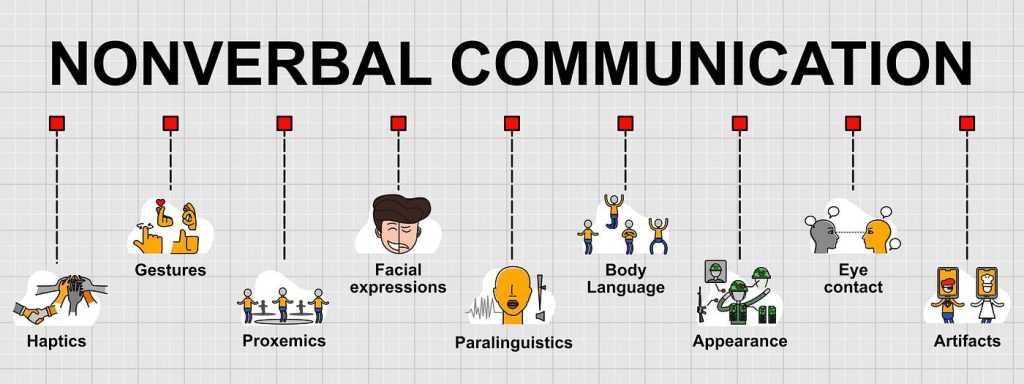Nonverbal cues play a significant role in communication, often influencing how messages are perceived and understood. While verbal communication conveys explicit information, nonverbal cues—such as gestures, facial expressions, posture, and eye contact—provide subtle yet crucial signals that shape interactions. In this article, we explore the importance of nonverbal cues, their impact on communication effectiveness, and how to interpret and utilize them in various contexts.
Understanding Nonverbal Communication
Nonverbal communication encompasses all forms of communication that do not involve words. It includes body language, facial expressions, tone of voice, gestures, and even the physical environment. Research indicates that nonverbal cues can account for a significant portion of communication—up to 93%, according to some studies. This underscores their importance in conveying emotions, attitudes, and relational dynamics.

Types of Nonverbal Cues
- Facial Expressions: Facial expressions convey emotions such as happiness, sadness, surprise, or anger. They are universally understood to some extent and play a crucial role in expressing sincerity and empathy.
- Body Language: Body language includes posture, gestures, hand movements, and body orientation. It can indicate openness, confidence, nervousness, or discomfort. For example, crossed arms may signal defensiveness or resistance.
- Eye Contact: Eye contact is a powerful nonverbal cue that communicates engagement, attentiveness, and interest. Proper eye contact can enhance rapport and trust between individuals during conversations.
- Voice Tone and Pitch: The tone, pitch, and inflection of one’s voice convey emotions and attitudes. A calm, steady voice may indicate confidence, while a high-pitched or trembling voice can signal anxiety or uncertainty.
The Impact of Nonverbal Cues on Communication
Nonverbal cues complement verbal communication and often provide context and emotional nuances that words alone cannot convey. They can reinforce or contradict verbal messages, influencing how the message is perceived and interpreted by others. Effective communicators recognize the importance of aligning their nonverbal cues with their verbal messages to ensure clarity and coherence.
Enhancing Understanding and Connection
- Building Trust: Nonverbal cues, such as maintaining eye contact and open body posture, can foster trust and rapport in interpersonal relationships. They create a sense of connection and empathy, enhancing the quality of communication.
- Conveying Confidence: Nonverbal cues play a crucial role in public speaking and presentations. Confident posture, gestures that emphasize key points, and a composed demeanor can enhance credibility and engagement with the audience.
- Resolving Conflicts: In conflict situations, nonverbal cues can signal willingness to listen, understand, and collaborate towards resolution. Open body language and attentive listening can defuse tension and facilitate constructive dialogue.
Improving Nonverbal Communication Skills
Enhancing your nonverbal communication skills can positively impact your personal and professional relationships. Here are some tips to improve your nonverbal cues:
1. Practice Self-Awareness
Become mindful of your own nonverbal cues by observing how you naturally express yourself in different situations. Notice your posture, gestures, facial expressions, and tone of voice, and reflect on how they may influence others’ perceptions.
2. Pay Attention to Others’ Nonverbal Cues
Develop your ability to read nonverbal cues by paying attention to others’ body language, facial expressions, and tone of voice during conversations. Practice active listening to better understand the emotions and intentions behind their words.
3. Seek Feedback
Ask for feedback from trusted friends, colleagues, or mentors regarding your nonverbal communication. Their insights can provide valuable perspectives and help you identify areas for improvement, such as adjusting your posture or enhancing your eye contact.
Conclusion
Nonverbal cues are a powerful aspect of communication that significantly impact how messages are received and interpreted. By understanding and effectively utilizing nonverbal cues—such as body language, facial expressions, and voice tone—you can enhance your communication skills, build stronger relationships, and achieve greater success in both personal and professional settings. Embrace the power of nonverbal communication to convey authenticity, build trust, and foster meaningful connections with others.
To contact and know more about us, feel free to click on this link: https://vbctraining.com.au/
